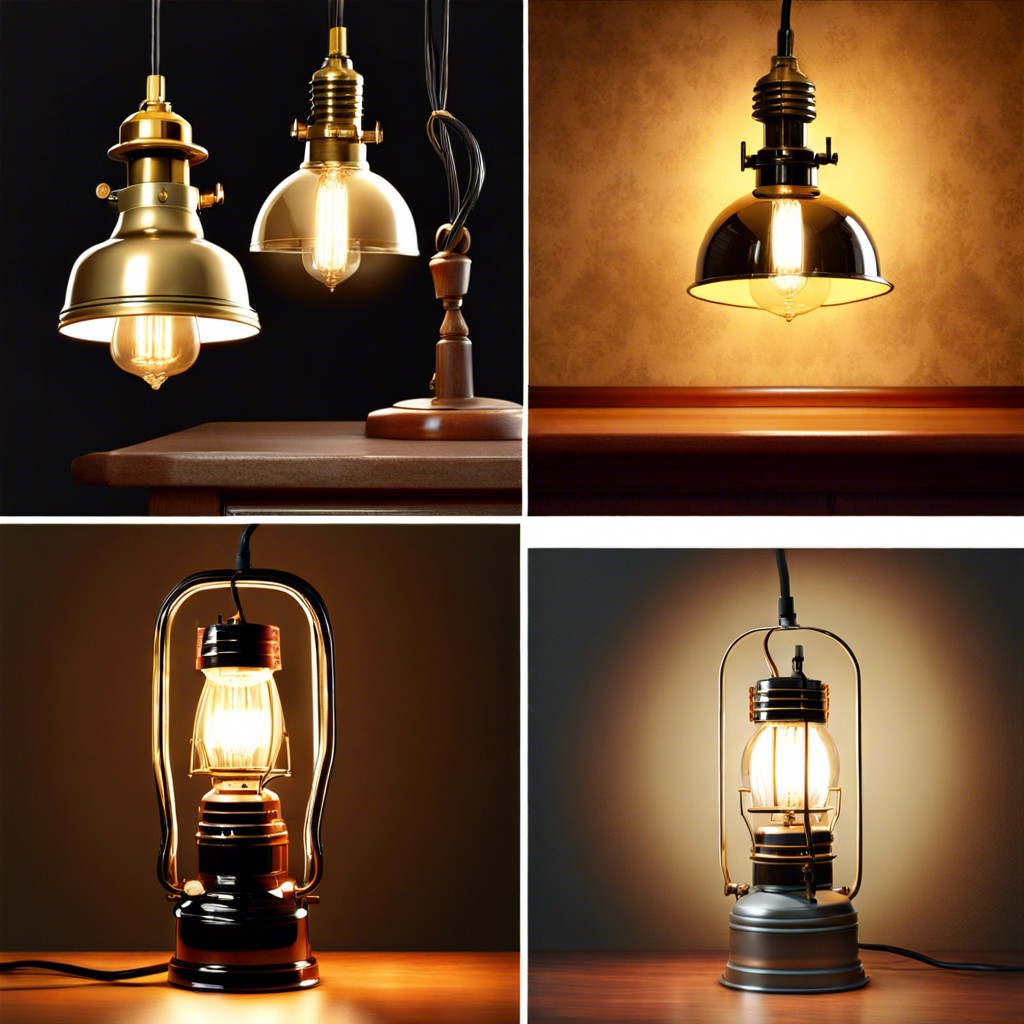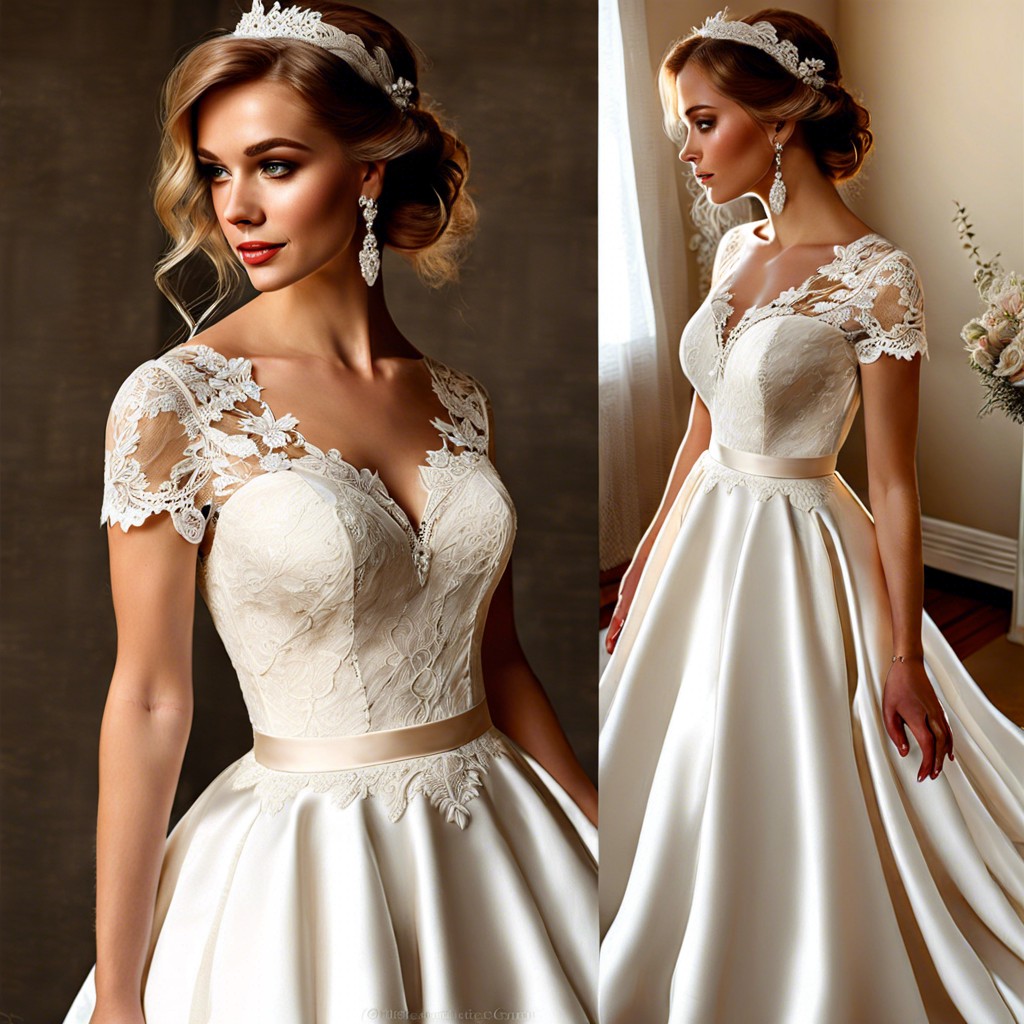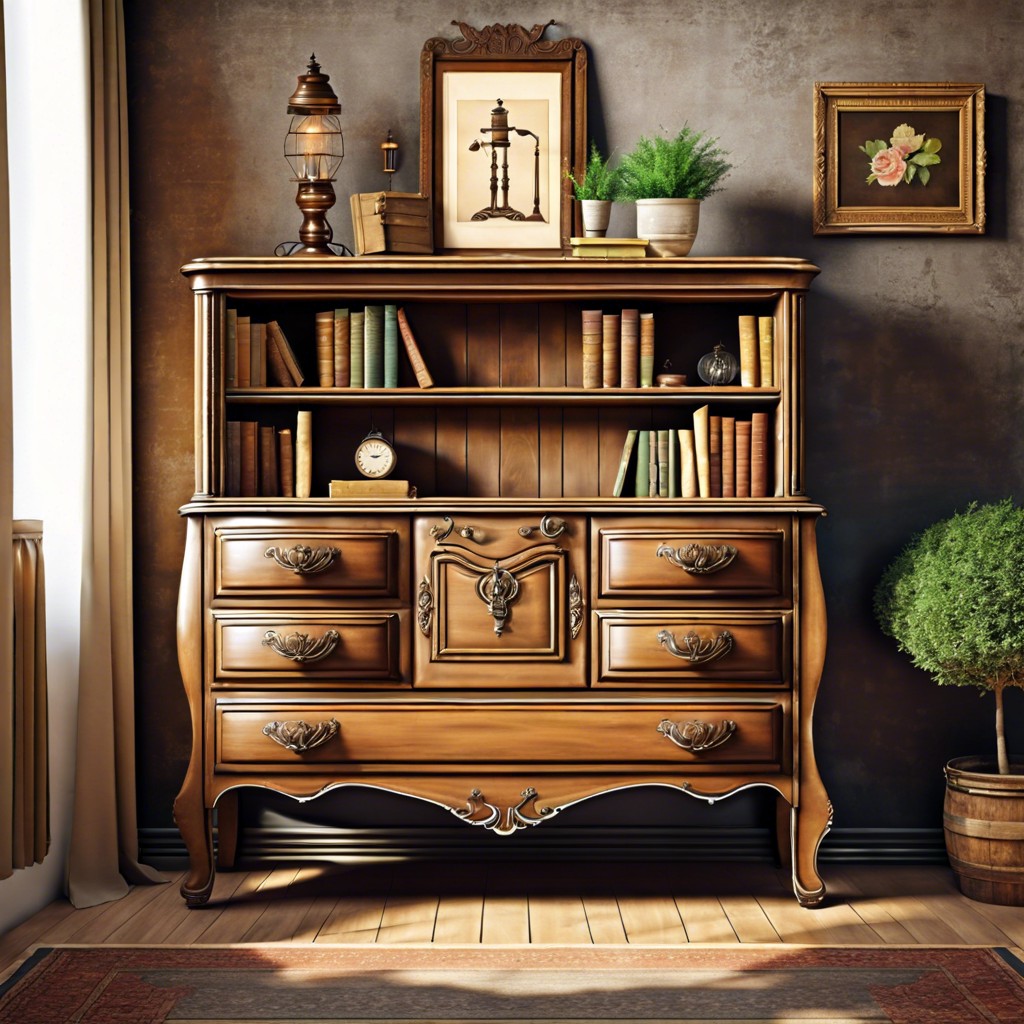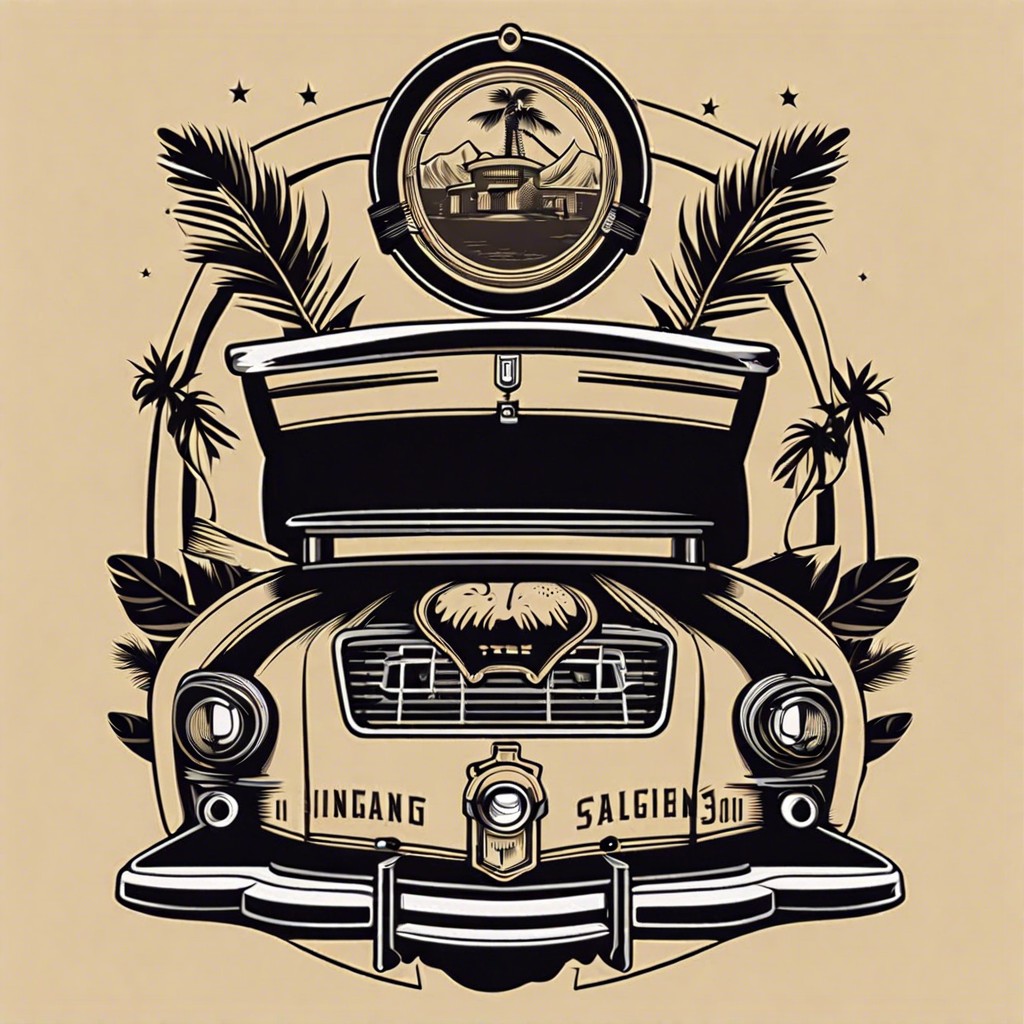Last updated on
Discover the charm and functionality of vintage lighting and how to incorporate these pieces into modern interiors.
Key takeaways:
- Vintage lighting reflects historical and design trends.
- Popular types include chandeliers, Art Deco lamps, Tiffany lamps, gooseneck lamps, and lantern-style lights.
- Retrofitting with LED bulbs and updating wiring ensures safety and energy efficiency.
- Antique shops, online dealers, auctions, and networking are sources for authentic vintage lighting.
- Vintage lighting adds character, warmth, sustainability, and value to interior design.
Historical Evolution of Vintage Lighting

Lighting, like fashion, cyclically reflects societal trends and technological advancements. Initially, homes relied on natural light, candles, and oil lamps. The 19th century brought gas lighting, primarily used in affluent urban homes and public spaces, setting a foundation for future aesthetic standards.
With the advent of electricity in the late 19th and early 20th century, lighting design took a significant leap. Art Nouveau styles introduced flowing, organic shapes, often incorporating floral motifs that contrasted starkly with the more functional gas lamps of prior years. As the Art Deco period took over, lighting adopted sleek, geometric forms emphasizing modernity and opulence.
Post-World War II years saw the rise of Mid-Century Modern designs. These fixtures featured minimalist forms with both functional and artistic statements, using materials like polished metal and molded glass. This era emphasized clean lines and simplicity, enabling light itself to become a central decorative element.
Today’s vintage lighting collectors cherish these historic nuances, appreciating each piece’s role in the broader narrative of design history.
Popular Types of Vintage Light Fixtures

Chandeliers exude elegance, with their intricate designs often featuring crystal or glass elements. Originating from gas or candle-lit versions, electric adaptations became popular in the early 20th century.
Art Deco lamps are recognized for their sleek geometric shapes and bold colors, reflecting the design trends of the 1920s and 1930s. They often blend materials like glass, chrome, and brass.
Tiffany lamps, from the late 19th century, are famous for their colorful stained glass shades. Each piece is made from hand-cut glass, soldered together to form picturesque designs.
Gooseneck lamps offer a blend of utility and vintage charm, ideal for desks or workspaces. Their adjustable, curved necks make them practical yet stylish.
Lantern-style lights, whether hanging or stationary, evoke a rustic or nautical feel. Originally designed for candles or oil, these have been updated to accommodate modern bulbs while retaining their classic appeal.
Each type of vintage lighting not only adds illumination but also serves as a conversational centerpiece, reflecting the rich historical eras from which they originate.
Retrofitting Vintage Lights With Modern Technology
Integrating LED bulbs into antique chandeliers or lamps is a popular choice. LEDs use less energy and last longer while maintaining the aesthetic charm. Simple yet effective, this update can breathe new life into classic fixtures.
Wiring is critical for safety and function. Have a professional replace old, frayed wires with new, up-to-code versions. This assures your vintage piece operates safely and efficiently in a modern setting.
Consider adding dimmer switches to old table lamps to adjust lighting intensity. Not only practical, this small addition helps set the right ambiance, blending old-world elegance with contemporary convenience.
For those looking to maintain pure authenticity, use light bulbs mimicking the warm glow of old filaments yet are crafted using modern energy-saving technology. This keeps the vintage vibe without sacrificing performance or increasing energy costs.
Always consult with a restoration expert when undertaking modifications to valuable or rare vintage lighting to preserve integrity and value.
Sourcing Authentic Vintage Lighting Pieces
Venturing into antique shops and flea markets can be a treasure trove for those on the hunt for original vintage lighting. Each piece tells its own story, often reflective of the era and artistry of its time.
Engaging with reputable online dealers specializing in vintage artifacts is another effective strategy. These platforms usually provide detailed histories and authenticity certificates for their items, assuring you of their provenance.
Auctions, both live and online, are also exciting places to seek vintage lighting. However, it’s crucial to have some background knowledge or seek advice from experts to make informed bidding decisions.
Lastly, don’t overlook the power of networking. Joining forums and communities that share an enthusiasm for vintage decor can lead to tips on upcoming sales and hidden gems available in private collections.
Impact of Vintage Lighting On Interior Design
Vintage lighting, when skillfully integrated, can transform even the most contemporary spaces into vibrant showcases of history and charm. Here’s why and how:
First off, vintage light fixtures serve as statement pieces. A salvaged chandelier or a unique mid-century lamp can act as a room’s focal point, drawing the eye and setting the tone for a space. This is particularly effective in minimalist surroundings where the intricate details of the light can really pop.
Secondly, these pieces carry with them a story, adding a layer of intrigue and nostalgia to your home. Whether it’s a Victorian gaslight converted to electric or an Art Deco ceiling fixture, each piece speaks to a bygone era, offering more than just illumination—they create conversations.
Another point to consider is the warmth and ambiance these old fixtures contribute. Unlike most modern lighting, vintage lamps often project softer, warmer light, contributing to a welcoming and cozy atmosphere—an ideal scenario for living rooms or bedrooms.
Using vintage lighting also provides an opportunity to practice sustainability. By recycling old lamps and fixtures, you’re giving new life to often-neglected works of art and reducing the demand for new resources.
Finally, integrating these antiques can significantly increase the value of a property by enhancing its uniqueness and aesthetic appeal—something that potential buyers often look for in a home.
Add a piece of the past into your space, and watch the whole room light up with a story and style that’s truly your own.




